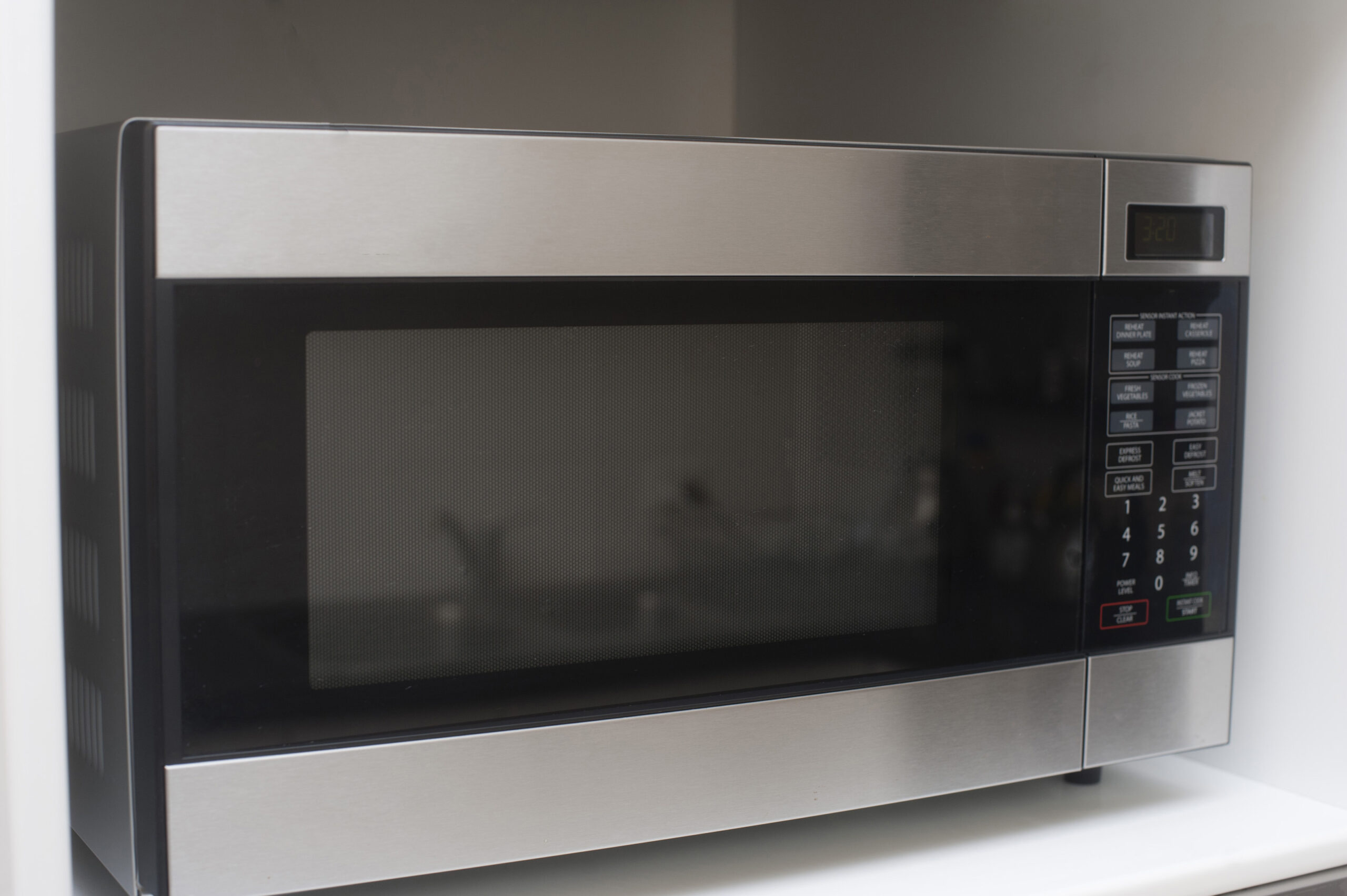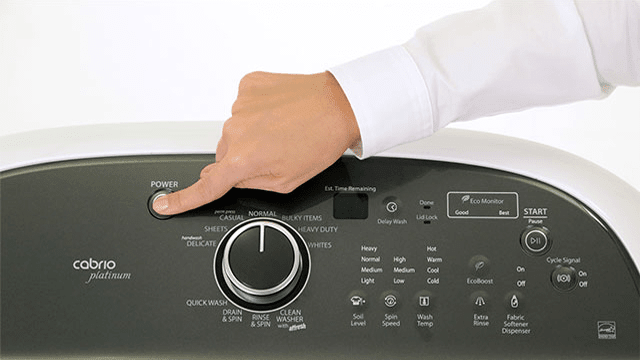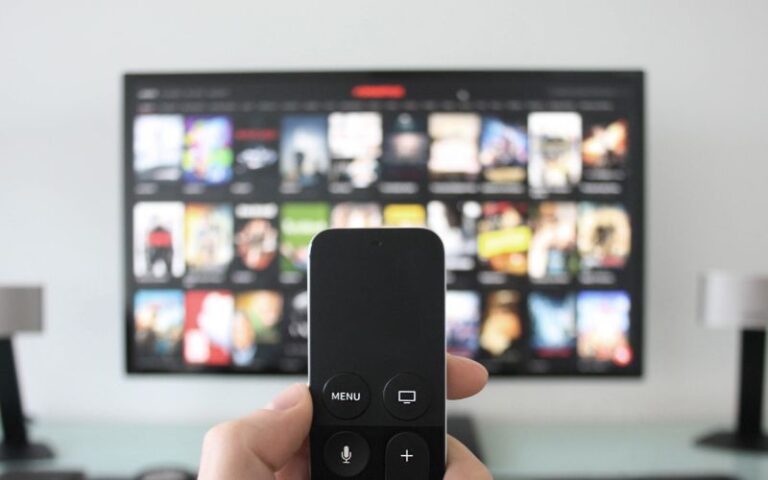How Much Power Does Microwave Use? (Must Know This)
Microwaves require power to function and exhibit their features. And, Electricity is the source for most microwaves to get the power they require.
You might be interested in the amount of power your microwave uses because the government will include the costs in your monthly or annual electricity bills.
Although the power a microwave uses varies with different models, microwaves averagely use 600-1000 watts of electricity for each operation. This s not influenced by how much power supply you have at the time of use.
In this article, I’ll tell you about the various watts and per kilowatts hour of electricity that various microwave models use.
You’d also get estimates of costs you’d have to pay in many states for different wattage ratings of microwaves.
How Much Electric Power Do Standard Microwaves Use?

Averagely, standard microwaves use between 600 to 1000 watts of electricity. However, the power a microwave uses varies based on the model of the microwave.
One factor that greatly affects the power a microwave uses is time. The longer you use your microwave for various cooking operations, the more power it consumes.
The power a microwave consumes affects the electricity because electricity is the power source.
Here is a table to show how much kilowatts per hour of electricity your microwave would be consuming per year:
| Power Consumption | Hours Per Year Run | Yearly Kilowatts Per Hour |
|---|---|---|
| 600 watts | 91.3 Hours | 54.8 Kilowatts Per Hour |
| 650 Watts | 91.3 Hours | 59.3 Kilowatts Per Hours |
| 700 Watts | 91.3 Hours | 63.9 Kilowatts Per Hour |
| 750 Watts | 91.3 Hours | 68.5 Kilowatts Per Hour |
| 800 Watts | 91.3 Hours | 73.0 Kilowatts Per Hour |
| 850 Watts | 91.3 Hours | 77.6 Kilowatts Per Hour |
| 900 Watts | 91.3 Hours | 82.2 Kilowatts Per Hour |
| 950 Watts | 91.3 Hours | 86.9 Kilowatts Per Hour |
| 1000 Watts | 91.3 Hours | 91.3 Kilowatts Per Hour |
Considering how much power and electricity your microwave consumes, you’d also have to consider how much costs would fill up on your monthly or yearly bills.
Here is a table based on the 2021 data from EIA of how much monthly and yearly costs you’d have to pay for different microwave wattage in different areas:
| State/Area | Average Electricity Rate | Monthly Electricity Cost | Annual Cost |
|---|---|---|---|
| California | 22.00 Cents/kwh | 1.34 dollars | 16.06 dollars |
| New York | 20.59 Cents/kwh | 1.25 dollars | 15.03 dollars |
| Texas | 12.56 Cents/kwh | 0.76 dollars | 9.17 dollars |
| Massachusetts | 22.59 Cents/kwh | 1.37 dollars | 16.49 dollars |
| Florida | 12.21 Cents/kwh | 0.74 dollars | 8.91 dollars |
| Virginia | 12.58 Cents/kwh | 0.77 dollars | 9.18 dollars |
| New Jersey | 16.20 Cents/kwh | 0.99 dollars | 11.83 dollars |
| Maryland | 14.48 Cents/kwh | 0.88 dollars | 10.57 dollars |
| Washington | 10.38 Cents/kwh | 0.63 dollars | 7.58 dollars |
| US Average | 14.19 Cents/kwh | 0.86 dollars | 10.36 dollars |
The amount of a microwave varies with different models because of the difference in functions, features, and designs.
Here is a list of common microwaves, the functions they perform, and the amount of power they require to carry out their functions:
- Built-in microwaves
- Over-the-range microwaves
- Low profile microwaves
#1. Built-in Microwaves
- Built-in microwaves take up only a minimal amount of space. It’s perfect if your kitchen is small. Here are some fantastic features of built-in microwaves:
- Built-in microwaves have a large cavity capacity.
- Built-in microwaves have eye-pleasing designs.
- Built-in microwaves check the safety box as they have a children’s safety lock to prevent children from tampering with the microwave.
- Built-in microwaves have a full glass and touch panel, making cleaning easy.
- You don’t need to worry about pre-heating when it comes to built-in microwaves, as they provide a wide variety of grill functions.
- Built-in microwaves come with up to eight auto-cook menus that save you the stress of setting the perfect temperature and cooking time.
#2. Over-the-Range Microwaves
Here are some fantastic features of built-in microwaves:
- Over-the-range microwaves are like countertop microwaves but better. These microwaves are better because they give you access to the countertop.
- Over-the-range has pre-installed ventilation that helps to remove smoke and air toxins during heavy cooking.
- Over-the-range microwaves facilitate better kitchen flow, allowing you to efficiently manage your time doing different things in the kitchen.
- Over-range microwaves often have a very classy design
- The high ends of over-the-range microwaves are mostly made with metals, making them very easy to clean.
- Over-the-range microwaves have a unique feature called sensor cooking. This feature helps to prevent food from overcooking if you forget to take out the food.
- Over-the-range microwaves have an eco-mode option to help save energy.
- Over-the-range microwaves have three defrost options
- Over-the-range microwaves come with up to seven easy menus for items such as pizza, beverages, potatoes, etc.
- Over-the-range microwaves have timers that help to take note of how much time you cook.
- There are three soft options in your microwave cheese, ice cream, and butter.
Over-the-range microwaves use about 850-1200 watts of electricity to facilitate their functions.
#3. Low-Profile Microwaves
Here are the features of low-profile microwaves:
- Low-profile microwaves only take up a little space.
- Low-profile microwaves provide powerful ventilation that helps to remove odor, grease, and steam during cooking easily.
- Low-profile microwaves have bright lights that illuminate the area during cooking.
- Low-profile microwaves have microwave presets and auto defrost, and some even have smart voice control abilities.
Low-profile microwaves use a standard 1000 watts of electricity to facilitate their operations.
How Much Power Will a 1000 Watts Microwave Use?
A microwave rated 1000 watts uses 1000 watts of electricity which translates to 1 per kilowatt of electricity.
By comparing its capacity, you can easily find your microwave’s standard wattage (electrical power rating).
Here is a table to show the capacity and wattage rating of microwaves.
| Microwave Capacity | Wattage Rating |
|---|---|
| 20 liters | 800 Watts |
| 23 liters | 1150 Watts |
| 28 liters | 2900 Watts |
Do Microwaves Consume Much Power?
No, microwaves do not consume so much power. The wattage rating depends on the time you use the microwave and the standard wattage rating of the microwave.
If you cut down on how much time you use a microwave and keep track, you’d notice that the monthly power rating would be a little.
However, it would be best to note that not all microwaves have the same microwave rating.
So it would be best if you researched the wattage rating for your microwave, depending on the model.
Does a Microwave Draw Electricity When Not in Use?
Yes, microwaves draw electricity when they are not in use.
Although the amount of electricity they consume when plugged in and not in use is relatively small, it can amount to a lot with time.
If you want to avoid paying bills for the energy you didn’t use, you should unplug your microwave when you’re not using it.
Also, not only that it draws electricity when you plug in your microwave without using it, but doing that can also create a possible hazard.
Does a Microwave Use More Power Than a Stove?
No, a microwave does not use as much power as a stove, either gas or electric. An electric stove would use about 2000 watts of electricity on average.
Here is a table to show how much power in watts and kilowatts per hour an oven would consume in a year:
| Wattage Rating | Hours Per Year Run | Per Kilowatt Hour Used Yearly |
|---|---|---|
| 2000 Watts | 365 hours | 730 per kilowatt hour |
| 2400 Watts | 365 hours | 876 per kilowatt hour |
| 2800 Watts | 365 hours | 1022 per kilowatt hour |
| 3200 Watts | 365 hours | 1168 per kilowatt hour |
| 3600 Watts | 365 hours | 1314 per kilowatt hour |
| 4000 Watts | 365 hours | 1460 per kilowatt hour |
| 4400 Watts | 365 hours | 1606 per kilowatt hour |
| 4800 Watts | 365 hours | 1752 per kilowatt hour |
If you use your microwave one hour per day, you’d only be using half of the power that gas stoves use and 60 % of the power that electric stoves use.
You May Also Like To Read
- What Does It Mean When A Microwave Gets Hot On The Outside?
- 5 Reasons That Microwave Plates Break!
- This is How Hot A Microwave Gets!
- Do Microwaves Interfere With Bluetooth? (Read This First)
- This is Why Microwaves Take Longer With More Food in Them!
- Can You Use A Microwave Without The Waveguide Cover?




















